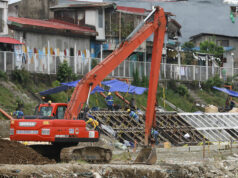Electronics exporters conservative for 2020
“For next year 2020, it’s gonna be very challenging. If anything, it could be a single-digit growth at the range of what we said — 0-3%,” Semiconductor and Electronics Industries of the Philippines, Inc. President Danilo C. Lachica told reporters on the sidelines of a forum on Tuesday last week.
He said that there are “a lot of global and local forces in play.”
While the US-China trade war has so far not made significant impact on Philippine electronics exports, he said, even as the Philippines has not been able to catch up with Vietnam in attracting many of the China-based companies moving operations due to the trade war.
A new set of US tariffs targeting Chinese consumer goods — including phones and laptops — may take effect on Sunday.
Philippine electronics products — which made up more than half of total merchandise exports worth $58.958 billion — grew 2.669% year on year to $33.202 billion in the 10 months to October. Semiconductors — which made up 73% of electronics exports and 41% of total exported goods — grew 1.833% to $24.317 billion.
“[Of] Our Philippine electronics industry, the biggest component is semiconductors which go to different products… office equipment or automotive,” Mr. Lachica said.
“But consumer products is also big. If we see escalating trade war, we might see an impact on consumer products.”
He continued to express concerns about losing foreign investment due to the planned overhaul of tax incentives, noting that employment will be cut over several years as products are “obsoleted.” The Philippine electronics industry continues to run a certain product until demand runs out, with factories shutting down if multinationals forgo expansion plans and locate elsewhere.
“Consumer products will be consummated faster than automotive products. The lifecycle of cellphones is very short. We have several sectors kasi. Ang pinaka-quickest siguro na maapektuhan ’yung (The quickest to be affected will be) consumer products. But automotive products — it takes years for them to run a particular model,” Mr. Lachica said.
In October, he said that the industry is confident of reaching its tempered 0-3% growth target for 2019. — JPI



